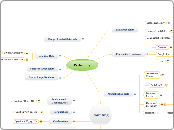Probability
Basic Probability
Classic Probability
Problem G
Empirical Probability
Problem I
Complement of Event E
Problem E
Addition Rule
Mutually Exclusive
Problem B
Non-Mutually Exclusive
Problem F
Probability Experiment
Outcome
Sample Space
Event
Simple Event
Multiplication Rule
IndependentEvents
Probelem H
DependentEvents
Problem A
Problem C
at least one
Problem J
Subjective Probability
Law of Large Numbers
Counting
FundamentalCounting Rule
Question #41, pg. 180
Permutations
Question # 20, pg. 178
Combinations
Question # 23, pg. 179
